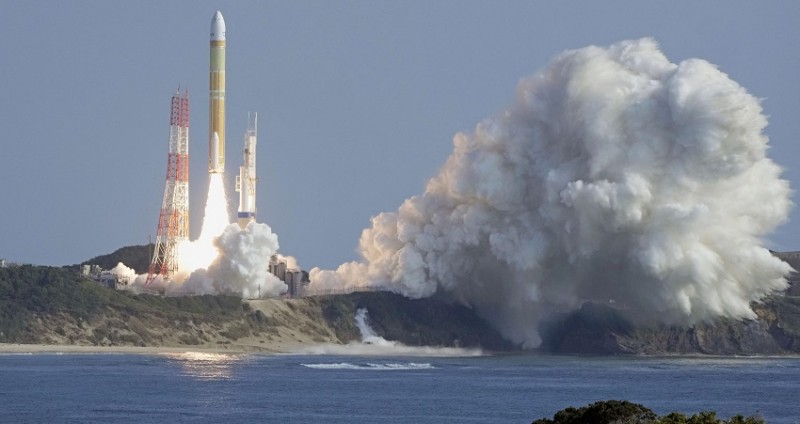
Japan's space agency achieved a significant milestone on Saturday with the successful launch of the second test model of its new flagship rocket, H3. This success comes after last year's setback when the inaugural flight of the H3 ended in failure.
The launch of the H3 rocket adds another feather to Japan's space program, especially following the recent "pinpoint" moon landing of Japan's SLIM spacecraft. The Japan Aerospace Exploration Agency (JAXA), along with primary contractor Mitsubishi Heavy Industries, has high hopes for the H3 rocket. They aim to replace the aging H-IIA rocket with the H3, boasting lower costs and increased payload capacity, which could attract orders from international clients.
The launch, which took place at 9:22 a.m. Tokyo time, was hailed as a success by JAXA. The rocket was reported to be on course, with its engines functioning properly. The live broadcast from Tanegashima Space Center captured the jubilant scenes of scientists celebrating the successful liftoff.
During its mission, the H3 rocket deployed one micro-satellite and is scheduled to release another, followed by the deployment of a dummy satellite approximately two hours after liftoff.
The first flight of the H3 rocket, back in March, ended abruptly when ground control had to destroy the rocket due to a failure in its second-stage engine. Despite subsequent investigations by JAXA, the direct cause of the failure remained unidentified, leading to delays in Japan's satellite and planetary exploration programs.
The H3 rocket, standing at 63 meters (about 297 feet), is designed to carry payloads weighing up to 6.5 metric tons into space. Its simpler structures and automotive-grade electronics are expected to reduce launch costs significantly compared to its predecessor, the H-IIA.
Looking ahead, Japan plans to utilize the H3 rocket for about 20 satellite and probe launches by 2030. Notable future missions include delivering a lunar explorer for the Japan-India LUPEX project in 2025 and supporting cargo spacecraft missions for the U.S.-led Artemis moon exploration program.
The demand for satellite launches has surged in recent years, driven by the emergence of cost-effective commercial vehicles like SpaceX's Falcon 9. Additionally, other players in the space industry, such as the United Launch Alliance and the European Space Agency, are gearing up to introduce their own rockets, like the Vulcan and Ariane 6, respectively.
North Korea Conducts Cruise Missile Tests Amid Calls for War Readiness